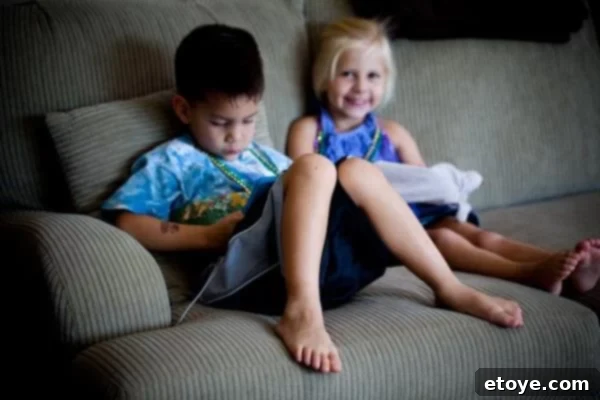The Unspoken Language of Childhood: A Suburban “Courtship” Unveiled
In the quiet, often overlooked corners of suburban landscapes, a fascinating world of intricate social dynamics unfolds among the youngest residents. Far from the complex negotiations of adulthood, children engage in their own unique forms of interaction, often mirroring the larger societal rituals in miniature. This observational piece delves into a captivating sequence of events, a playful “courtship” ritual witnessed between two small humans, highlighting the subtle cues, efforts, and unspoken agreements that shape their nascent social bonds and teach them invaluable life lessons.
Deep within the sun-dappled folds of suburbia, where neatly manicured lawns meet quaint, family-filled homes, we observed two young protagonists. These small human creatures were on the cusp of engaging in a ritual, one that, to the adult eye, might appear simple, yet holds profound significance in their developing world. Their interaction was a dance of gestures and reactions, a silent conversation rich with meaning and expectation.
The Opening Gambit: A Gift and a Glance
The first delicate step of this intriguing ritual had just commenced. With an earnestness unique to childhood, a boy human initiated the interaction. Just moments before our observation began, he had approached his target female, adorning her with what could only be described as garlands of jewels. These weren’t precious stones, of course, but likely brightly colored beads, plastic rings, or perhaps even vibrant flowers gathered from a nearby garden – treasures in the eyes of a child, offered with a clear intent. This initial offering, a classic gesture of attention and perhaps even affection, set the stage for the unfolding drama.

Despite the boy’s heartfelt overture, the girl human’s reaction was notably subdued. She seemed unimpressed, her expression perhaps conveying mild disinterest or a strategic neutrality. This initial lack of enthusiastic reciprocation is a common, albeit often unintentional, test in the social learning curve of children. It teaches the initiator about persistence, reading social cues, and adapting strategies. Her reserved response didn’t deter the boy; instead, it prompted a shift in his approach, demonstrating an early understanding of nuanced social navigation.
Strategic Maneuvers: The Art of Service and Persistent Effort
Sensing her distinct disinterest, or perhaps simply understanding that his initial tactic hadn’t yielded the desired outcome, the boy human swiftly moved to the next phase of his game. This decision to pivot, rather than retreat, speaks volumes about the innate drive for connection and the readiness to learn and adapt in young individuals. What followed was a demonstration of a different kind of effort, a more practical, service-oriented gesture, perhaps learned from observing adult behaviors or simply concocted from a child’s imaginative toolkit for problem-solving.
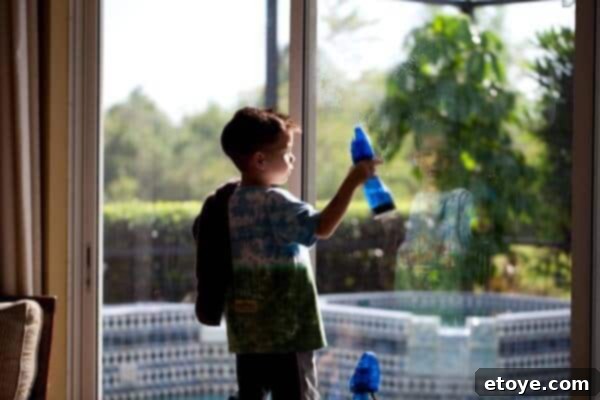
His chosen activity? Washing windows. This unexpected, yet profoundly telling, action transformed the dynamic. It wasn’t about flashy gifts anymore; it was about demonstrating capability, helpfulness, and perhaps a subtle plea for shared activity or approval. The act of “washing windows” in a child’s world is often symbolic – it could be an imaginative play task, mimicking grown-up chores, or a genuine effort to contribute to a shared space. In this context, it was clearly an attempt to regain her attention and perhaps earn her favor through a display of industriousness and commitment.
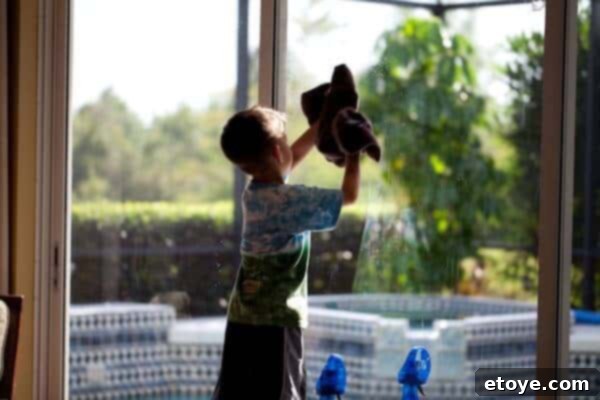
Now, the focus shifted to the girl. How would she respond to this new, more industrious display of attention? The ball was, metaphorically, in her court. Her reaction would be crucial in shaping the subsequent trajectory of their interaction. This phase highlights the back-and-forth nature of social learning, where each action elicits a response, creating a continuous loop of feedback and adjustment.
Reciprocity and Reward: A Budding Connection
And respond she did. It was a moment of subtle but significant triumph for the boy. The girl human, perhaps acknowledging his persistent effort or simply deciding to engage, seemed to be rewarding him. She offered him two garlands, a clear sign of affection and reciprocal engagement. This act of giving back is vital in establishing equilibrium in social interactions. It validates the boy’s efforts and signals her willingness to participate in the playful exchange. The symbolic value of her offering two garlands, perhaps signifying a greater level of appreciation or a more generous reciprocation than his initial single gift, was not lost in the unspoken language of their interaction.
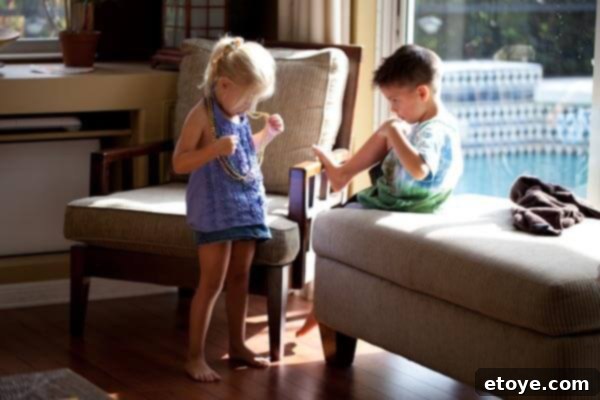
Emboldened by her sentimental actions and the tangible reward, the boy human’s resolve was visibly strengthened. The gesture served as positive reinforcement, affirming that his adapted strategy had been successful. This is a fundamental lesson in social development: understanding that different approaches yield different results and that persistence, combined with observation and adaptation, can lead to desired outcomes. His next move was a testament to this understanding.

He resumed washing windows. This wasn’t a retreat to his previous disinterest; rather, it was a continuation, perhaps a silent affirmation of his commitment, or an indication that the “work” was not yet finished. It showed a delightful mix of earnestness and a burgeoning understanding of social give-and-take. His continued diligence suggested that he was not just seeking a superficial interaction but was ready to engage in a sustained, shared activity. The act of returning to the window washing also implied that he understood the implied contract: his effort had earned a response, and now it was his turn to demonstrate continued engagement.
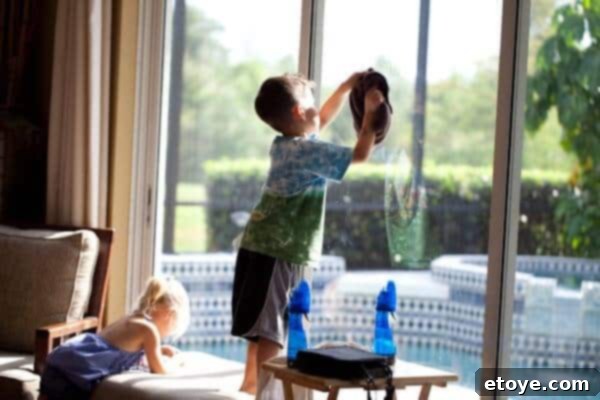
At this juncture, the interaction transformed into a classic “wait and see” game. The initial offering, the strategic pivot, the reciprocation – all had paved the way for this moment of suspended anticipation. The question hung in the air: Will the girl human make the next decisive move? The subtlety of these moments in childhood play is often overlooked, yet they are crucial training grounds for learning patience, observation, and the delicate art of non-verbal communication. Both children were now engaged in a silent negotiation, each waiting for the other’s next signal.
The Delicate Dance of Disengagement: Patience as a Virtue
In the complex and often unspoken human courting dance, even at its earliest, most innocent stages, the boy human intuitively understood a critical principle: sometimes, the most powerful action is inaction. He now had to exhibit no overt emotion, to appear disengaged, to create a space for the girl to act without feeling pressured. This quiet observation phase is a profound lesson in social dynamics – learning when to pursue and when to allow space for the other party to initiate. It demands self-control and a keen awareness of the other’s comfort levels, skills that are refined throughout life.

The suspense built. “Wait for it…” The unspoken command hung in the air, understood by both participants in their silent communication. The boy maintained his composure, a picture of strategic nonchalance. This period of quiet waiting allowed for tension to build, making the eventual interaction all the more meaningful. It taught both children about the rhythm of social engagement – the ebb and flow, the moments of active participation, and the equally important moments of passive waiting and observation. It’s a fundamental aspect of interaction, whether between children or adults, where space and anticipation often amplify the significance of the eventual connection.
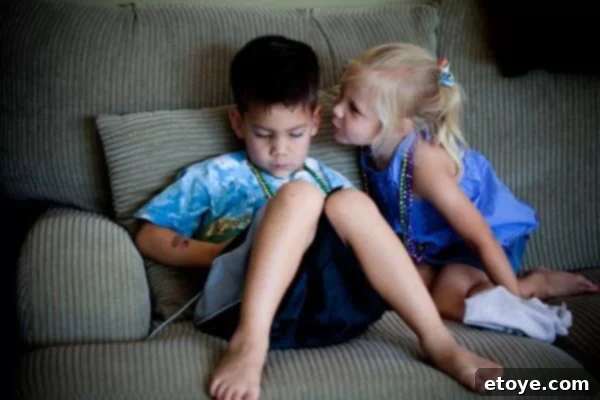
“…wait for it…” The seconds stretched, filled with unvoiced expectations. Each child was learning to read the subtle signals, the shifts in posture, the direction of glances – an intricate language without words. This quiet interlude was not passive; it was deeply active, involving heightened sensory awareness and internal processing. It was a test of patience for the boy and a moment for the girl to process the preceding interactions and decide on her next step. These are the moments where children truly begin to understand the give-and-take of relationships, learning to anticipate and react.
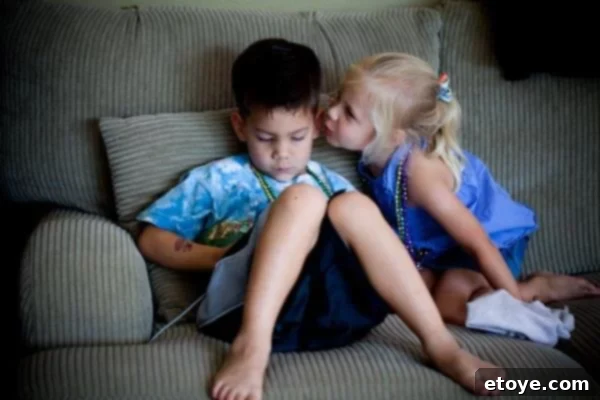
“…wait for it….” The final moments of suspense before the resolution. The world of these two children, for that brief time, shrunk to their interaction, a bubble of focus and unspoken communication. The suburban backdrop faded into irrelevance as the subtle tension between them commanded all attention. This prolonged waiting period underscored the significance of the interaction itself, elevating it from a casual encounter to a pivotal moment in their shared play. It taught them the value of earned outcomes and the thrill of a successful, mutual engagement.

The Triumph of Connection: A Childhood “Score”
Then, the breakthrough. The culmination of observation, effort, strategic waiting, and reciprocal engagement. “SCORE!!” The success was palpable, a clear victory in the game of childhood connection. The girl human made her move, whatever it entailed – perhaps joining him in washing windows, offering another gift, or simply a shared smile that cemented their interaction. This “score” wasn’t about winning or losing in a competitive sense; it was about achieving mutual engagement, establishing a connection, and successfully navigating a complex social ritual.
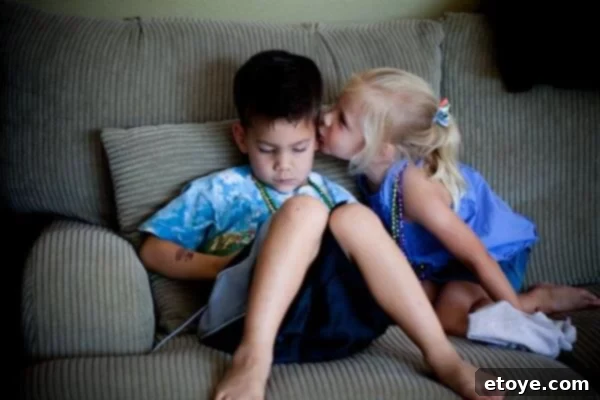
This triumphant moment encapsulated the entire sequence: from initial offering and perceived rejection, through adaptation and persistent effort, to patient waiting and ultimate reciprocation. It was a complete narrative arc of social interaction played out in miniature. The joy and satisfaction evident in that “SCORE!!” moment are universal, reflecting the fundamental human need for connection and successful interaction. For these young children, it was an invaluable lesson in negotiation, empathy, resilience, and the rewarding nature of genuine connection.
Conclusion: The Profound Simplicity of Play
What we witnessed was more than just children playing in a suburban setting; it was a profound, unscripted masterclass in social development. These seemingly simple interactions – the offering of gifts, the act of service, the strategic waiting, and the ultimate “score” – are the building blocks of social intelligence. They teach children how to read cues, understand boundaries, exercise patience, and navigate the complex, often non-verbal, landscape of human relationships. The suburban environment, often seen as mundane, becomes a vibrant stage for these essential life lessons.
This “courtship ritual” underscores the incredible capacity of children to learn and adapt, to persist in the face of disinterest, and to find creative ways to connect. It reminds us that play is not merely recreation; it is the primary arena for cognitive, emotional, and social growth. The elegance of their unspoken language, the clarity of their intentions, and the genuine satisfaction derived from mutual engagement offer a beautiful glimpse into the profound simplicity and power of childhood interactions. As observers, we are left with a renewed appreciation for the intricate, often humorous, and always meaningful journey of social learning that unfolds in the everyday lives of our youngest humans.
